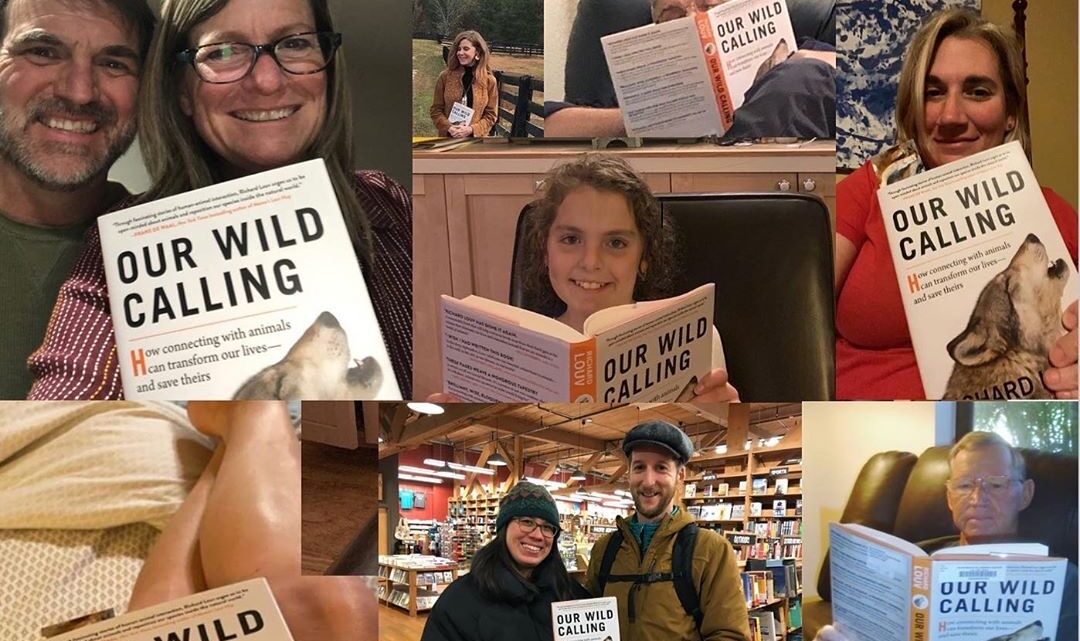
Wild animals will save us from solitude and fears. An exclusive interview with Richard Louv, author and nature journalist, on Our Wild Calling, his latest inspiring bestseller
Wolves, deer, bears, hawks. Wildlife pushes at the doors of our towns, asking for attention. But we should not be afraid. A challenging, visionary book, just published into Italian with the title L’anima animale, explains why all animals, especially the wild ones, can save us from the turmoil of solitude and fears in which mankind is falling. And heal our hearts.
Here an exclusive interview with Richard Louv who, after the success of Last Child in the Woods, comes back with his new book Our Wild Calling, How Connecting with Animals can Transform our Lives. and Save theirs. Spokesman for a new generation of researchers and authors for nature, for which the future is in the connection and cohabitation with the other non-human species and love for nature, Louv brings here his message of hope and positivity.
We all belong to the same family, wich deserves to be loved
Q. Main issue is that nature and wildlife can have a positive impact on human health and wellbeing, as much research confirms. How can we overcome the fear of wildlife, especially now with the Covid experience which poses the problem of menace from spillover from wild species (as bats?)
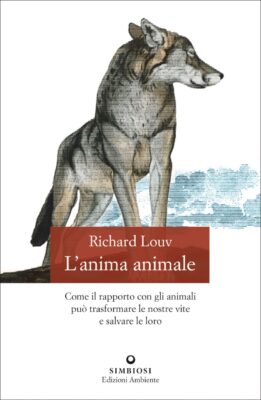
A. Both domestic and wild animals can have a profoundly important impact on us. They help us every day, even when we are not aware or do not acknowledge that help; they expand our senses, teach us empathy, communicate with us in ways that science is only beginning to understand. One caution about a possible consequence of the pandemic: heightened fear of wild animals. Probably sooner than later, the issue of dangerous human-animal connection will come to the forefront. Right now we do see coverage of wet markets, and the connection to transferance of the virus to people from wild animals.
Will the growing hunger for nature be offset by a backlash toward wild animals, particularly in cities? (The section in my new book, “Our Wild Calling: How Our Connection to Animals can Transform our Lives — and Save Theirs) about what I call “the betweens” is relevant.) The OneHealth public health movement, making physical and psychological room for animals in cities will become increasingly important.
For example creating wildlife corridors, “neighborhood wildwatch groups” to protect both animals and humans; all these issues should be at the forefront of the debate to come. So should the need for protection and expansion of wilderness areas, as a public health necessity.
What wll the post-pandemic world look like? Humanity has to take nature into account
Parents and policymakers must also ask: What will the post-pandemic world look like, regarding human-nature connection? Are we preparing now to maximize the benefits and reduce the dangers of that connection? What will it take to move our species to act on climate disruption, biodiversity collapse, the threat of mass extinctions, and ongoing pandemics related to our treatment of animals? A reliance on facts and logic is clearly not enough. We need at least two additional ways to make the case.
Love and emotions can produce huge changes
The first is love – deep emotional attachment to the nature around us. Second element is imaginative hope – our ability to describe a future worth creating. The Australian eco-philosopher Glenn Albrecht argues that only “a shift in the baseline of emotions and values has worked” to transform facts into action in other areas, such as feminism, same sex marriage and racial inequities.
The reason why these causes have made some progress in his and other countries is because “they revolved around the issue of love.” This is why the images of suffering animals and human heroism in Australia are so important.
They remind us, at least for a while, that we belong to a larger family, one worth loving. Now we have an opportunity to take these steps, because of the pandemic-induced feeling of longing for relationship — with our loved ones and with the rest of nature.
The habitat of the heart, the emotional space by which we can connect with wildlife
Q. You write about a “habitat of the heart”, a key issue in your book. Can you explain in few words what you mean?
A. Recognizing how we share our habitat – not only the physical world, but in what I call the habitat of the heart – is about the future children of all species. Each animal we encounter has the potential to become part of us or part of who we could become. If we meet them halfway. Whether in wilderness or urban or rural areas, our encounters with wild animals can produce altered states. Our perception of time, space and scale can be changed radically during even a brief meeting with a wild animal. It happens that senses come alive, not the five we usually think about, but conservatively nine or ten. Some scientists believe humans have as many as thirty senses, most of which we seldom use.
By looking into each other eyes communion happens
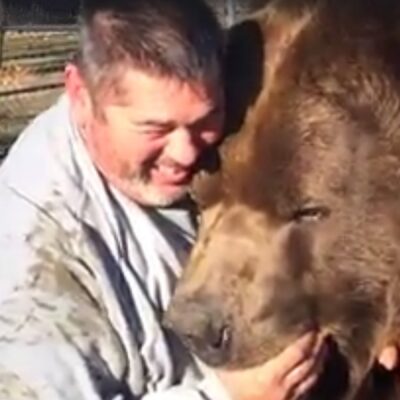
One of the people I interviewed talked about her encounters with ants, at their level, transported her into another world, their world, and like Gulliver’s encounter with the Lilliputians, her normal sense of scale faded. And many other stories illuminate not only the altered states, but also the bursts of spiritual growth that can accompany these encounters. In such moments, it is impossible to feel alone in the world. During my own close encounter with two golden eagles on a lake shore, I became intensely aware of the reality that existed between them and me had its own agency. This is the reality of relationship, in the habitat of the heart. I believe the key to the future of life on Earth exists in that habitat.
There are, in effect, two habitats: the physical habitat which many of us devote ourselves to protecting; the other is the habitat of the heart, which we do not nurture, in ourselves or in our children, as we should. If one of those habitats goes, so does the other one.
Symbiosis, new frontier for a mankind suffering from solitude
Q. I understand that connectedness with animals is a sort of “new frontier” for humanity in search of escape from loneliness, sadness, lack of a meaningful life besides survival from climate change and the disasters waiting for us in the next future. Can you mention tree steps that we can do to approach wildlife, like finding emotional intimacy with animals, etc.?
A. The best approach will be for humans to get to know their animal neighbors. This approach will, in fact, require more human contact with wild animals but at a respectful, cautious distance. And public education will require more than information from biologists. As we strive for interconnection in what I call “Symbiocene City,” schools, service groups, and conservation organizations could teach people how to prevent aggression from wild animals. (The Australian philosopher Glenn Albrecht argues against accepting the concept of the human-centered Anthropocene epoch, and for what he calls the Symbiocene, an aspirational time of symbiosis between all forms of life).
Practical advice to deal with wildlife in safety
A couple of basics: don’t harass animals and take the time to learn the rules of encounter with specific species (e.g., should you play dead, run, or make yourself look large and threatening?). Don’t feed wildlife. Feed your pets indoors. Reduce serious loss of songbird populations by keeping cats indoor. Fence your vegetable garden. On a more positive note, keep those binoculars and digital cameras available for when a deer or eagle or rare ring-tailed cat happens by.
Symbiocene City, the future city where humans and animals can coexist in peace
In Symbiocene City, you may feel an urge to become a wildlife artist, or keep a nature journal next to your guides of wild mammals and birds in your bioregion, or create a wildlife sanctuary in your yard. What a joy it could be to work with others to restore urban wetlands and plant native species.
Just as communities create Neighborhood Watch groups to prevent human crime, we could launch Neighborhood Wildlife Watch groups (which don’t yet exist in large numbers but should). Even in the most populated urban neighborhoods, members of such groups could track the influx of wild animals, prevent dangerous encounters, and record the exit of animal refugees from climate change. They could volunteer at urban wildlife rehabilitation and pet rescue centers.
Places of worship and schools, too, could create Wildlife Watch clubs; these could educate students through biology and other natural history education courses about the bioregion in which they live. Young people could learn about the risks and opportunities that come with a city that prizes its animal residents, including humans. They might explore together the ways that different cultures interact with animals and the range of mythology and folktales and medicinal practices that different cultures bring to the city. Here are the seedbeds of citizen science. Here are our future biologists and veterinarians and animal-assisted therapists.
Through such organizations or informal groups, students and adults could explore how a city might build a stronger sense of identity, attract ecotourism, and identify the potential for new jobs and careers in public health, urban ecology, urban design, and architecture. In addition to reducing harm to wild animals, domestic pets, and human beings, Neighborhood Wildlife Watch campaigns would give people a greater investment in their regional and personal identity and the psychological well-being and confidence that comes with that.
In these ways and more, building human-nature social capital would reduce species loneliness and increase hope. As Bob Randall, a Yankunytjatjara elder in Australia, expressed it, this “would be a beautiful way of being that doesn’t push anybody out” but “brings everybody in.” In this context, people would share their animal stories around a twenty-first-century campfire and in these stories find purpose, joy, and renewal.
Man is no longer the master of creation
Q. I live in a catholic country, where only recently the Curch pronounced words of respect towards nature. Otherwise, for our culture and catholic religion (differently from other ones) nature and wildlife have been inferior forms of life, servants to the master: man. This lead to disregard nature and wildlife. How can we correct this cultural and religious approach?
A. We are seeing some change, and regional campaigns are bringing people from across political, religious and economic divides, to connect people to nature. European cultures have often been more conscious of assuring a sense of balance in the lives of children and families, particularly in the use of natural learning environments in schools. But nature deficit is a growing problem in every urbanizing country. I’ve found that smart religious or spiritual people, across religious boundaries, intuitively understand that all spiritual life begins with a sense of wonder. For children, nature is one of the first windows into wonder.
The sense of wonder, key to spirituality
And for many children, that window is in danger of closing. The human spirit is inseparable from the natural world. As the Catholic eco-theologian Thomas Berry wrote, “A degraded habitat will produce degraded humans.” The concept of an “ecological unconscious” has emerged at the crossroads of science, philosophy and theology. This is the idea that all of nature is connected in ways that we do not fully understand. As for Pope Francis, I do tell the story, in “Our Wild Calling,” about his moving response to a child whose pet had just died. He alluded to at least the possibility that the boy’s dog had a soul.
Living simultaneously in the digital and physical world is possible
Q. Following this, lacking a spiritual background we are also not as familiar with wildlife as indigenous people, we live in urbanized cities. So how can develop intimacy with them?
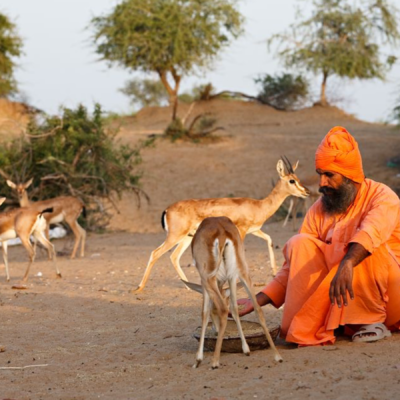
A. Yes, some older cultures are more aware of the sacredness of nature, and we have much to learn. I should say here, too, that some of us need to think differently about how different ethnic or cultural groups relate to nature. In “The Nature Principle,” I write about what I call “natural cultural capacity,” the historic nature-based strengths that have been under-reported and under appreciated in, for example, Indigenous, African-American, Hispanic, and other communities.
Nature is our most immediate, shared window into wonder. This is not only a view into the past but into a potential new era. I avoid the phrase “back to nature.” I prefer to say, “Forward to nature.” Doing that is not anti-urban and not anti-technology. Let children know that this is the ultimate multitasking, to live simultaneously in both the digital and the physical world, using computers to maximize our powers to process intellectual data, and natural environments to ignite all of our senses and accelerate our ability to learn and to feel.
Teaching children love for nature
It’s never too early – or too late — to teach children or adults to appreciate and connect with the outdoors. We can spend more time with children in nature. This is quite a challenge, one that emphasizes the importance of exploring nearby opportunities, particularly unstructured time in nature. Schedule outdoor time, direct experiences in nature; make getting outside in a natural area an intentional act – a healthful habit, if you will – that becomes part of your life. We all can create new natural habitats in and around our homes, schools, neighborhoods, workplaces, cities and suburbs, so that, even in inner cities, our children grow up in nature – not with it, but in it.
Wolves and bears who “shaped” our ethics
Q. Wild animals, as you say, can teach us humans values like cooperation, love, ethics. They actually “shaped” our ethics according to some studies you quote. Can you explain in a few words this revolutionary concept?
A. The majority of the research focuses on green environments. Surprising little research has been done on the therapeutic impact of wild animals on human health and well-being. I hope this book stimulates more appreciation of how wild animals shape us and how we shape them. This is particularly important as people and wild animals live in increasingly close proximity, including in our cities. I also explored how our companion and other domesticated animals can have a profound impact on our mental and physical health, including the development of empathy and ethics in children, their cognitive functioning and so forth.
This evidence is being put to good use in the growing movement toward animal-assisted therapy. In “Our Wild Calling,” I tell the story of my boyhood dog, Banner, who I am convinced taught me a set of ethics, ones that had passed from Banner’s ancestors down through thirty thousand years to him, and from him to me. I’m convinced that wild animals offer these same benefits, often in more mysterious ways.
The “existence value” to protect other species
Q. Last, what about “ex wild” animals we now eat or exploit for different reasons? Should we become vegan to respect their lives?
A. It’s important to remember that this isn’t just about us. Animals have a right to exist, even if we didn’t benefit from them. In environmental ethics, this is called “existence value.” Still, I do think that, as a society, we should talk more about those benefits, including ways to make sure the good is reciprocal, for us and for other animals.
The Reciprocity Principle
In Our Wild Calling, I suggest a new ethic toward the natural world, what I call the Reciprocity Principle. Here’s description of that principle, from the book: “ For every moment of healing that humans receive from another creature, humans will provide an equal moment of healing for that animal and its kin. For every acre of wild habitat we take, we will preserve or create at least another acre for wildness.
For every dollar we spend on classroom technology, we will spend at least another dollar creating chances for children to connect deeply with another animal, plant, or person.
And for every day day of loneliness we endure, we’ll spend a day in communion with the life around us until the loneliness passes away.”
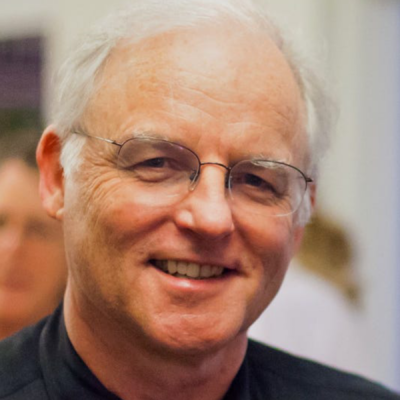
Richard Louv is co-founder and chairman emeritus of the Children & Nature Network and author of THE NATURE PRINCIPLE: Reconnecting With Life in a Virtual Age, LAST CHILD IN THE WOODS: Saving Our Children from Nature-Deficit Disorder, and VITAMIN N: The Essential Guide to a Nature-Rich Life. His most recent book is OUR WILD CALLING: How Connecting with Animals Can Transform Our Lives – and Save Theirs.
This interview is also available on this blog in italian language. Special Thanks to Richard Louv for this fantastic opportunity.
Un ringraziamento particolare a Richard Louv per avermi dato modo di intervistarlo. Il testo di questa intervista è disponibile su questo blog anche in lingua inglese.
©Riproduzione riservata